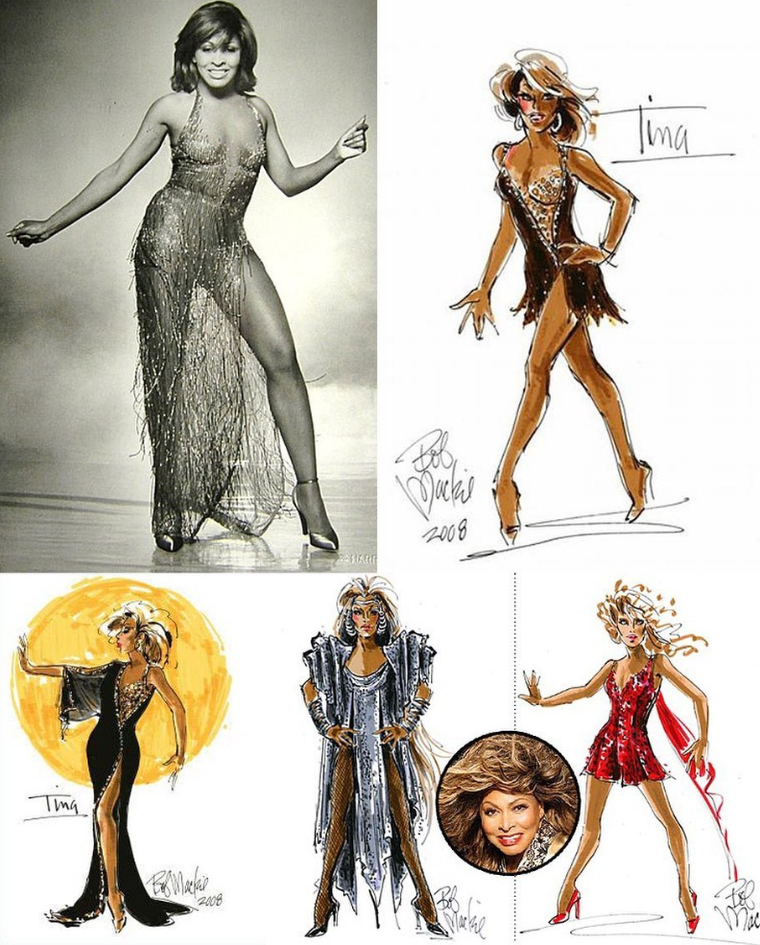OPINION: This article may contain commentary which reflects the author’s opinion.
Tina Turner, known for her electrifying stage presence and fierce individuality, is a cultural icon whose legacy extends far beyond her music. But one of her most iconic looks—the “cavewoman” outfit—was not just a product of her rockstar persona. It was a collaborative masterpiece created by Turner and the legendary fashion designer Bob Mackie, who helped transform her wild vision into a show-stopping reality.
The Birth of a Bold Idea
During the early stages of Tina Turner’s solo career, she was on a quest to redefine herself as an artist. Having emerged from the shadow of Ike Turner, Tina was ready to embrace her own style, one that embodied the raw energy and power she exuded on stage. But there was one problem: She couldn’t find the right look. That’s when she turned to Bob Mackie, a designer known for his extravagant and daring costumes that pushed the boundaries of fashion.
In one of their first collaborations, Turner brought Mackie an inexpensive evening gown she had purchased in a Parisian boutique. However, this wasn’t just any dress—it was the canvas for something far bolder. Turner, ever the visionary, had a clear idea of what she wanted: a look that was primal, raw, and untamed. In a moment of creative genius, she reportedly said to Mackie, “Can we make this look like a cavewoman?”
The idea was a reflection of Turner’s own transformation. No longer content with the conventional glamorous looks that defined much of the music industry at the time, she wanted something that matched her ferocity, her strength, and her wild, untamed stage persona. And who better to bring that idea to life than Mackie, a designer celebrated for his ability to create truly iconic, statement-making outfits?
Mackie’s Magic Touch
Bob Mackie, who had already established himself as the go-to designer for bold and boundary-pushing fashion, took Turner’s concept and ran with it. He took the simple evening gown and transformed it into a one-of-a-kind stage costume that was truly unlike anything audiences had ever seen before. The result was a stunning mix of glamour and primal energy—a dress that appeared to be both sophisticated and wild, much like Tina herself.
Mackie added dramatic fringe, exotic textures, and a sense of ruggedness that aligned perfectly with Turner’s vision. The look was raw yet glamorous, as if it belonged to an otherworldly, powerful woman who could both command the stage and capture the imagination of anyone who laid eyes on her.
It was a look that not only turned heads but also symbolized Tina Turner’s emergence as a solo artist in her own right. Her new, fierce persona was matched by her equally fierce outfit—a perfect reflection of a woman who was reclaiming her place in the spotlight, unapologetically and without restraint.
A Partnership That Defined an Era
What makes this partnership even more remarkable is how it showcased both Turner’s resourcefulness and Mackie’s brilliant artistry. Tina Turner was not someone who relied on a typical stylistic approach. She was deeply involved in the creation of her stage costumes, going as far as purchasing gowns herself and then working closely with Mackie to alter them into something that felt authentically her own.
Mackie recalls Turner’s vibrant energy and her unwavering confidence, which were integral to the success of their collaboration. He says, “Tina was born to be an entertainer.” Her presence was undeniable, and Mackie’s designs gave her the visual tools she needed to match her incredible performance style. The collaboration wasn’t just about clothes; it was about crafting a unique image that fit the music and the woman behind it.
An Enduring Legacy
The “cavewoman” look is just one of many unforgettable outfits Tina Turner wore during her career, but it holds a special place in fashion history. It represented a bold departure from the conventional and helped cement her status as a true style icon. The partnership between Tina Turner and Bob Mackie became a symbol of creativity, reinvention, and empowerment, and the legacy of their work lives on to this day.
In the end, this iconic look wasn’t just about fashion. It was about Tina Turner’s own transformation as an artist and a woman. She wasn’t just performing—she was living her truth, and with Bob Mackie’s help, she created a visual identity that would forever be synonymous with strength, power, and individuality.
